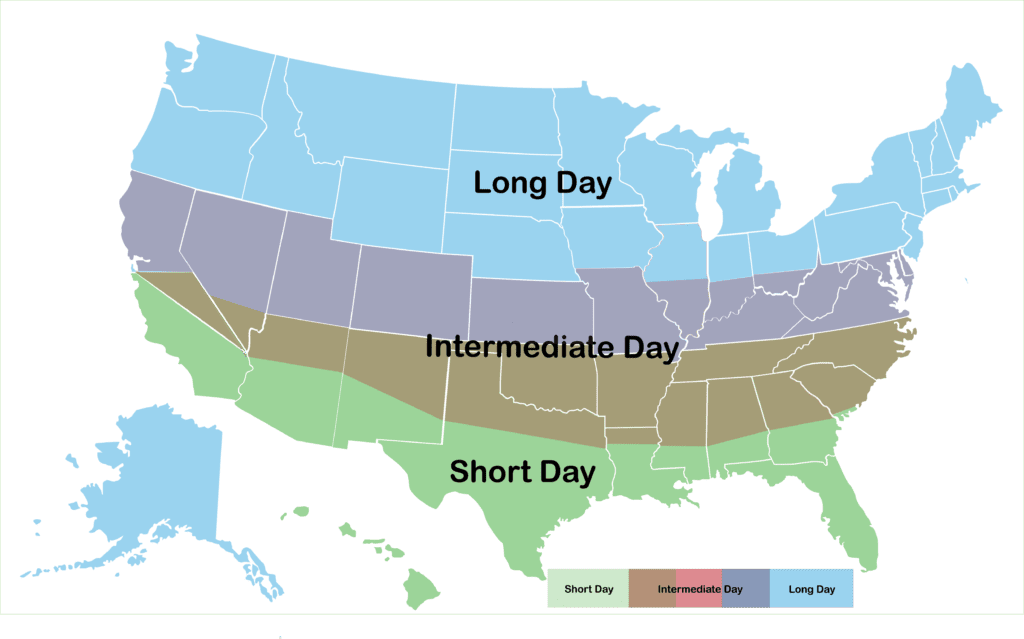FAQs
What variety should I grow (or sell)?
The most important factor for variety selection is daylength, or the number of hours of sunlight needed to initiate bulbing and for onion plants to form full, mature bulbs. Planting the wrong daylength varieties for your area will result in small bulbs or the plants may fail to form bulbs at all.
Onions form bulbs in response to critical daylength and are classifed into three categories: long day, intermediate day, and short day varieties. Whether you are planting for yourself or selling plants for your customers to plant, the appropriate varieties for your areas are crucial to a successful onion crop.
The map below provides a guide for daylengths by location. While there may be discrete differences in specific locations due to factors such as altitude, use this map as a general reference tool.

When should my plants ship?
We will ship plants whenever you would like, but recommend you receiving them close to your appropriate planting window for the best growing results. The general rule of thumb is to plant about 6 weeks before your last average frost. If weather or shipping issues arise, don’t stress – the plants can survive off of their stored carbohydrates for up to 6 weeks.
See more shipping details here.
What should I do once my plants arrive?
Once your plants arrive, it’s best to remove them from their shipping container if possible. Keeping them cool and dry will help them stay fresh as long as possible.
If you are reselling the plants, they can be displayed in their original packaging, but we suggest allowing airflow to the center bunches by tossing them around every once in a while. If the tops grow or curl towards the sunlight, feel free to trim their tops for better display appearance.
How should I present the plants if I plan to resale them?
We understand that plant presentation will greatly impact the saleability of your onion plants. Our tips for keeping the plants fresh and presentable include:
Ensure all bunches receive adequate airflow. If possible, remove the bunches from their original packaging and spread out reduce moisture in the center of the box.
The tops may grow out or curve towards the sun or light. If this happens, feel free to trim the tops a bit to keep the plants looking fresh and healthy. The plants will grow new tops once replanted so trimming has no real impact, other than appearance, on them.
Lastly, DO NOT WATER the onion plants. Once harvested from our fields, the next watering these plants should receive is when the plants are transplanted at their new home or field.
Shop Onion Transplants
Our variety selection and pricing caters to market gardeners, farmers, and wholesalers. Check out our seleciton of ORGANIC and CONVENTIONAL onion plants.

